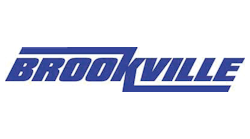Milwaukee’s New Streetcar Will Provide Transit, Economic Development
When Milwaukee city officials envisioned a new streetcar system that would start in downtown area neighborhoods, they not only saw a way to move residents, employees and visitors, they also saw a tool for economic development.
The streetcar system, called The Hop, presented by Potawatomi Hotel & Casino, is already achieving the goal of city-building, ahead of its expected opening in November 2018. New high-rise office towers and apartment complexes have been announced along the streetcar’s initial and expansion routes.
The streetcar’s initial phase is a 2.1-mile route. An additional 0.8-mile Lakefront extension connecting to Lake Michigan also is underway, bringing the total cost to approximately $128 million. The Lakefront extension will link Milwaukee’s downtown and lower east side to the cultural attractions along the lakefront, including the Milwaukee Art Museum, Discovery World and Henry W. Maier Festival Park.
Brookville, Pennsylvania-based Brookville Equipment Corp. delivered the first of five streetcar vehicles on March 26, 2018. It’s a 67-foot long vehicle with capacity for up to 120 passengers and a maximum load of 150. By July, city officials are expected to have all five streetcar vehicles.
“The streetcar provides both a new transportation choice for Milwaukeeans and visitors and serves as an economic tool,” said Milwaukee Mayor Tom Barrett. “We’re already seeing more development in the area even before we've launched our system. With planned extensions, the streetcar will also create a vital connection between downtown and neighborhoods and further spread the vibrancy and development we’re seeing in the downtown area.”
Multiple developers are in the process of implementing projects and are citing the streetcar as a factor. One such project is the new 25-story BMO Harris Bank tower, a $132.6 million project from commercial real estate developer Irgens, that will sit along the streetcar line and is expected to be complete in December 2019.
“In the big picture, the streetcar serves multiple goals. The main one is adding mobility and connectivity to downtown and the city at large,” said Ghassan Korban, Commissioner of Public Works for the city of Milwaukee. “Much like other cities with a streetcar starter system, our development community recognizes the advantages it brings to Milwaukee.”
Another project is the $125 million 44-story mixed-use tower, the Couture, developed by Barrett Lo Visionary Development. Located along the city’s lakefront, Couture will include a podium for a streetcar stop along the Lakefront expansion. That podium also will act as a transit concourse to be served by both The Hop and the local bus rapid transit route, said Ashley Booth, National Streetcar Practice Leader for HNTB, which has been leading the final design team and consulting with city leaders and others for the streetcar system.
“The [Couture] project will serve as the front door of the community,” Booth said. “It’s where the downtown and lakefront come together. The streetcar and Couture will be a crown jewel at the forefront of that connection.”
Other development announcements have been made along the streetcar routes, Booth said, including the Milwaukee Athletic Club’s plans to renovate its hotel component and a project called Broadway Connection, a seven-story mixed-use apartment complex at N. Broadway and E. Clybourn Street.
“What we are starting to see is a concentration of projects that are being announced or under construction”, said Matt Dorner, Economic Development Director for Milwaukee Downtown, a business improvement district. “Sites that have proximity to water assets – the lake and river — were the first to see development. That’s going to continue. But as those venues fill up, we will see more along the streetcar route, including hospitality projects, office towers and apartments.”
Dorner noted that developers are citing the importance of the proximity to the streetcar in their decisions to invest in projects.
“Because they know it is going to be there for the long term, we’re also seeing the brokerage community, where they have vacant space near the route, starting to use the streetcar in their marketing pieces. There are a variety of conversations along that front,” said Dorner.
City officials have already approved $20 million in local funds and applied for additional federal funds to extend the streetcar past the convention center to the new Milwaukee Bucks Arena, which is planned to be completed this summer. The City already has completed NEPA and 30 percent plans for the Fourth Street Extension. That route would set the stage for a potential future extension to the near-north side Bronzeville neighborhood.
“The beauty of fixed-rail transit and the modern streetcar is the system investment provides a clear direction to small businesses, developers, investors or the finance community that this transportation investment is here to stay,” Booth added. “600,000 people annually passing by a storefront or potential development site really helps focus investment along these corridors.”
The Hop already has contributed to increased revenues for Milwaukee residents, Korban said. “From a workforce development perspective, there are direct and indirect revenue benefits from the system’s construction. Over 44 percent of the construction hours of the streetcar included Milwaukee residents, equaling hundreds of thousands of labor hours. Obviously, those paychecks, then get circulated back into the community.”
“The streetcar system is something that has been envisioned in the downtown master plan for some time,” Dorner said. “This initial phase links together catalytic project areas and historically underutilized sites that are prime for redevelopment. We are linking these great nodes of activity and improving the overall mobility downtown.”
As companies consider expansions or relocations, the Hop will be an economic tool to show how the city can compete for talent, as well.
“The streetcar project is sending a signal that Milwaukee is investing in its future,” Dorner said. “Milwaukee is a multimodal city. As you are looking to build your city, it’s important to have that to bring in new businesses and residents alike.”
Lisa R. Schoolcraft is a freelance writer for HNTB Corp.




